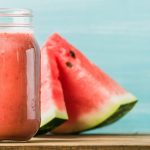If you have been consuming protein powders in a shake form only, then you’ve been missing out on a great opportunity to mix it up a bit. Why not try cooking with protein powders?
Why Cook/Bake with Protein Powder?
There are several reasons why we recommend cooking or baking with protein powders. If you’re trying to consume more protein, incorporating protein powder into a cookie, bar, pudding or even a bite sized snack just might be the answer you’re looking for. For others, consuming these types of snacks may help you to feel less guilty than eating other snacks with limited nutritional value. Another large benefit to cooking with protein powder is that since they have become very popular, there are hundreds of recipes that you can refer to!
Types of Protein Powders Available to Use
Typically, there are four main types of proteins that are commonly used for baking: whey protein, casein protein, single source plant-based proteins and blended plant-based protein powders.
Whey protein is the most common and versatile of the protein powders and it’s available in a wide assortment of flavours. It is a dairy protein that is a by-product of cheese manufacturing. When cooking or baking with whey, a wet-type of ingredient such as bananas, apple sauce, eggs, yogurt, etc. are suggested.
Casein protein, like whey protein is dairy based. However, it is a slow digesting protein with a thick and creamy texture when mixed.
There are 3 very popular single source plant-based proteins, they are pea, hemp and soy proteins. However, there are some differences between these three. The most common is that none of them are a complete plant-based protein, meaning they do not provide all the essential amino acids your body needs. Depending upon the brand, pea protein can be known to have a strong flavour that may not be very pleasant. Pea protein is not necessarily recommended for baking as depending upon the quantity and recipe used, it can cause baked goods to shrink and become hard in texture. As hemp has drying tendencies, it would require the addition of wet ingredients such as egg whites or milk. Hemp with its very distinct flavour profile works best in recipes containing chocolate or coconut. Soy protein powder comes directly from soybeans. Although, versatile, soy protein is identified as one of the nine most common allergens.
Blended plant-based protein powders are considered complete proteins. This means that because of the blend of different plant sources, all nine essential amino acids naturally occur within the product. PROFI Protein Booster is an award-winning, complete high protein plant-based blend that can be added to boost the protein in cooking and baking recipes. As it is 100% vegan, non-GMO, gluten free and contains no dairy or soy allergens, it is ideal for using in a variety of baking and cooking recipes. See below for baking tips on using PROFI Protein Booster.
Four tips for baking with a blended plant-based protein such as PROFI Protein Booster
- If you are planning to adapt a traditional recipe that uses flour, try substituting up to a maximum of 1/3 of the flour with a plant-based protein powder blend such as PROFI Protein Booster.
- Do not overbake! It is important to bake recipes using blended plant-based protein powder in an oven set at 325 degrees. If the heat is too high, it can cause the baked goods to harden.
- Don’t overmix the batter. As plant-based protein powders such as PROFI Protein Booster tend to be heavier and denser, it may be necessary to stir/fold in the ingredients just until they are mixed.
- Spray pans with a non-stick spray and/or place wax paper/parchment paper on the bottom of trays, muffin tins as plant-based protein baked goods will stick to pans.
Do you have some more tips for cooking & baking with proteins? Or do you have a favourite recipe with added protein? Let us know in the comments!







